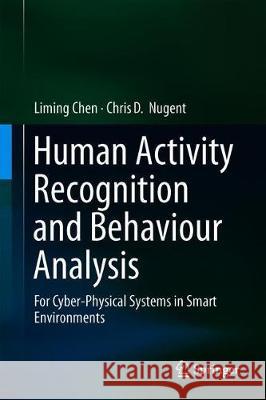Human Activity Recognition and Behaviour Analysis: For Cyber-Physical Systems in Smart Environments » książka
Human Activity Recognition and Behaviour Analysis: For Cyber-Physical Systems in Smart Environments
ISBN-13: 9783030194079 / Angielski / Twarda / 2019 / 255 str.
Human Activity Recognition and Behaviour Analysis: For Cyber-Physical Systems in Smart Environments
ISBN-13: 9783030194079 / Angielski / Twarda / 2019 / 255 str.
(netto: 498,38 VAT: 5%)
Najniższa cena z 30 dni: 501,19
ok. 22 dni roboczych
Dostawa w 2026 r.
Darmowa dostawa!
Recent advances in ubiquitous computing, sensing technologies, the Internet of Things, mobile computing and smart environments have led to a new wave of smart cyber-physical applications. These applications require human-machine systems to support context awareness, learning and cognitive capabilities, as well as personalization and adaptation. Intelligent analysis and semantic interpretation of events, activities, behaviors and environmental states are key to the success of such cyber-physical human-machine systems. There has been a constant shift of sensor observation modeling, representation, interpretation and usage, from low-level raw observation data and their direct/hardwired usage, data aggregation and fusion to high-level formal context modeling, activity recognition and behavior analysis, and further to change detection, decision support and recommendation. It is envisioned that this trend will continue towards a higher level of abstraction, to achieve situation, activity and goal awareness to support smart cyber-physical human-machine systems in a wide range of applications, such as smart homes, smart grid, intelligent transport, and smart cities.This book provides a systematic introduction and in-depth investigation of human activity recognition and behavior analysis for cyber-physical human-machine systems in smart environments. Based on the author's extensive expertise, skills, experiences acquired over years of research, it provides insights into future research trends and directions, with particular focus on the knowledge-driven approach.The book first defines the problem, various concepts and notions related to activity recognition, and introduces the fundamental rationale and state-of-the-art methodologies and approaches. It then describes the use of artificial intelligence techniques and advanced knowledge technologies for the lifecycle of modeling and analysis of human activities and behaviors using real-time sensing observations from sensor networks and the Internet of Things. It also covers inference and decision-support methods and mechanisms and personalization and adaptation techniques, which are required for emerging smart human-machine pervasive systems, such as self-management and assistive technologies in smart healthcare. Each chapter provides theoretical background, technological underpinnings and practical implementation, and step-by-step information on how to address and solve specific problems in topical areas.This monograph, dedicated to activity recognition and behaviour analysis, can be used as a textbook for postgraduate and PhD students on courses such as computer systems, pervasive computing, data analytics and digital health. It can also be used as a research reference book for postdoc researchers and academics for their research and innovation in relevant research and application domains such as data analytics, smart cities, smart energy, and smart healthcare, to name but a few. The book is also a reference for smart technology developers and specific application developers, offering technological and practical insights into the use of activity recognition and behaviour analysis for the development of state-of-the-art cyber-physical systems. This book is of particular value to health and care solution developers and providers, as it informs them of opportunities and possible innovative solutions for personalised healthcare and stratified medicine.











